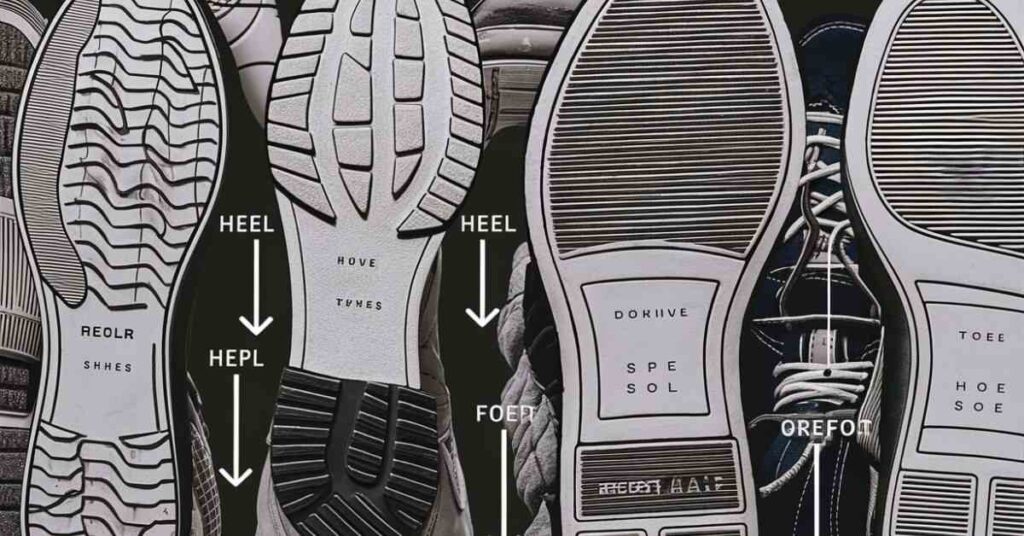The bottom of shoes is called the sole. It is the part that touches the ground. The sole protects our feet. It also gives us grip when we walk.
The sole comes in different shapes and materials. Some have patterns for extra grip. Knowing about the sole is important. It helps us understand our shoes better. So next time you look at your shoes remember the sole underneath.
Getting to Know the Sole
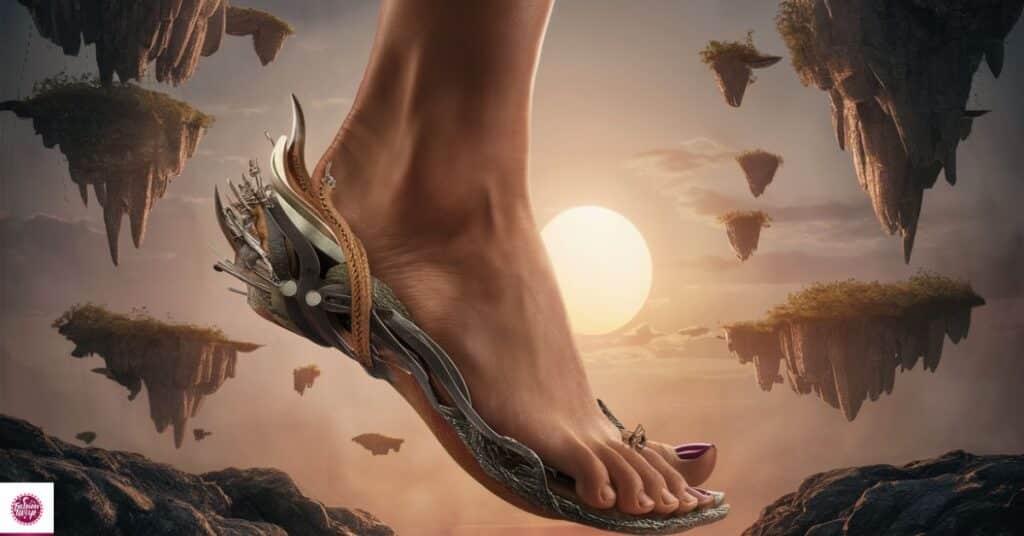
Understanding the sole is crucial for shoe comfort and safety. It is the shoe’s bottom part. Different types of soles serve various purposes. Some offer cushioning, while others provide durability and grip. Overall, knowing about the sole enhances our understanding of footwear.
Read This Blog:
What To Wear With Yellow Shoes
Main parts of a shoe
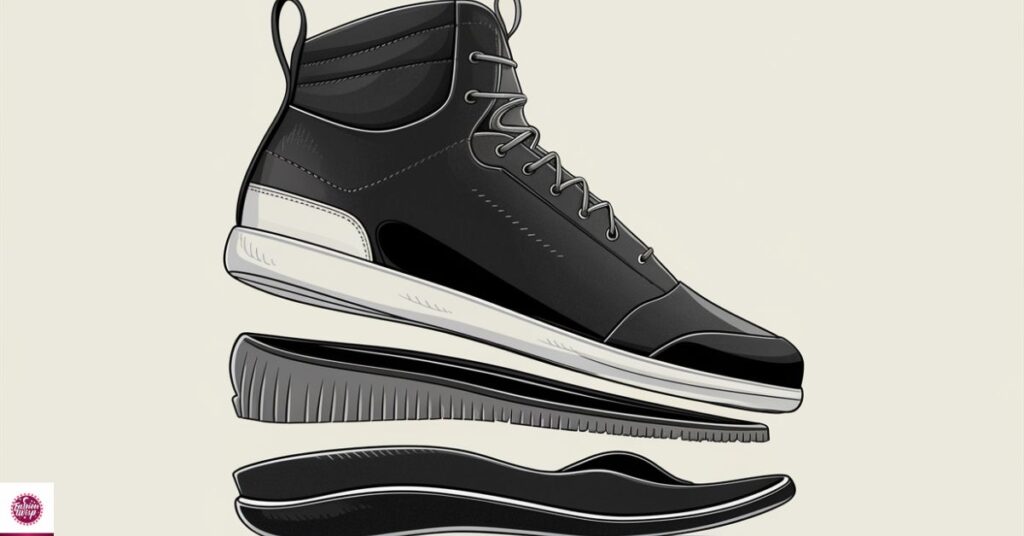
The main parts of a shoe include the toe cap eyelets tongue and heel. Additionally, there is the heel tab heel counter outer sole midsole foxing and insole. Each part plays a specific role in the shoe’s structure and functionality. Understanding these parts helps us appreciate shoe design and construction.
Toe cap
The toe cap is the front part of the shoe covering the toes. It provides protection from impacts and stubs. Often made of reinforced material like rubber or leather. Toe caps help extend the lifespan of shoes.
Eye stay
The eye stay is the part of the shoe where the eyelets are attached. It helps secure the laces in place. Eye stays vary in design and thickness. They contribute to the overall aesthetics of the shoe.
Eyelets
Eyelets are small holes on the upper part of the shoe. They are used to thread laces through. Eyelets come in different shapes and materials. They provide structural support and facilitate proper fitting.
Tongue
The tongue is the flap of material under the laces. It protects the top of the foot from pressure. Tongues help distribute the pressure from the laces. They also prevent discomfort and chafing while wearing shoes.
Heel tab
The heel tab is a small loop at the back of the shoe. It helps with putting on and removing shoes. Heel tabs often have branding or decorative elements. They aid in pulling the shoe onto the foot.
Heel Counter
The heel counter is a stiff insert in the heel area of the shoe. It provides stability and support. Heel counters prevent the shoe from collapsing. They also help maintain the shape of the shoe over time.
Outer Sole
The outer sole is the bottom part of the shoe. It comes into direct contact with the ground. Outer soles provide traction and grip. They also protect the shoe’s midsole and foot bed.
Midsole
The midsole sits between the outer sole and the insole. It provides cushioning and support. Midsoles often use materials like EVA or polyurethane foam. They absorb shock and enhance comfort during activities.
Foxing
Foxing is a strip of material that wraps around the shoe’s upper. It reinforces and strengthens the shoe’s structure. Typically made of rubber or canvas, it adds durability. Foxing also enhances the shoe’s aesthetic appeal.
Shoe heel
The shoe heel is the raised part at the back of the shoe. It supports the wearer’s heel. Heel heights vary depending on shoe style and design. Shoe heels contribute to overall stability and posture.
Insole
The insole is the inner sole of the shoe. It provides cushioning and comfort for the foot. Insoles can be removable or fixed. They often have additional arch support features.
Also Read This Blog:
What To Wear With Purple Shoes
The bottom of a shoe
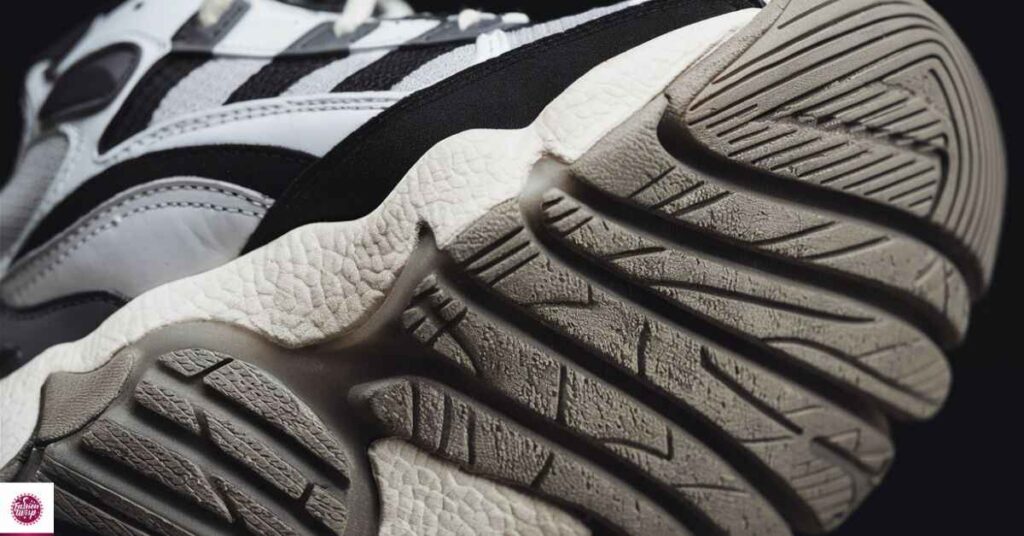
The bottom of a shoe is called the sole. It is the part that touches the ground. The sole comes in various shapes and materials. Some are designed for specific activities like running or hiking.
The sole plays a vital role in providing traction and support. It also protects the foot from sharp objects. Understanding the sole helps in selecting the right footwear for different purposes. Knowing about the sole’s composition enhances our overall understanding of shoes.
Unveiling the Foundation: Exploring the Bottom of a Shoe
Exploring the Bottom of a Shoe delves into the essential components that make up the shoe’s sole. From the toe cap to the heel tab, each part serves a crucial role in providing support and protection. Understanding these components enhances appreciation for shoe design and construction. Exploring the bottom of a shoe reveals the intricate details that contribute to its overall functionality and comfort.
Sole Essentials: Understanding the Components Beneath Your Feet
Sole Essentials: Understanding the Components Beneath Your Feet is a comprehensive exploration of the vital elements that make up the sole of a shoe. From the toe cap to the heel tab, each component plays a unique role in providing support and comfort.
Delving into these components enhances our understanding of shoe construction and functionality. By knowing these essentials, we can make informed decisions when selecting footwear for various activities and environments.
Treading Lightly: The Role of Traction and Support in Shoe Bottoms
The Role of Traction and Support in Shoe Bottoms highlights the significance of traction and support in shoe design. The outsole’s tread patterns provide grip on various surfaces, ensuring stability.
Additionally, supportive features like the midsole and heel counter enhance comfort and reduce fatigue. Understanding these elements is essential for selecting footwear suited to specific activities and environments.
Maintaining Stability: Caring for and Preserving the Shoe’s Foundation
Caring for and Preserving the Shoe’s Foundation emphasizes the importance of proper shoe maintenance. Regular cleaning and inspection help prevent damage and extend the shoe’s lifespan.
Storing shoes in a cool, dry place away from direct sunlight further protects them. By taking these simple steps, we can ensure the stability and longevity of our footwear.
Getting to Know the Sole

Unraveling the Foundation of Your Footwear
Understanding the Importance of the Sole in Shoe Design
Exploring the Parts:
The Role of the Toe Cap Eyestay Eyelets and Tongue
Structural Elements: Heel Tab and Heel Counter
Ground Contact: Outer Sole and Midsole
Additional Features: Foxing and Insole
Understanding Sole Varieties:
Different Types for Various Activities
Materials Matter: Impact on Comfort and Performance
Caring for Your Sole:
Tips for Proper Maintenance and Longevity
Preserving Traction and Comfort Over Time
Appreciating the Sole: Key to Comfort, Stability, and Durability in Every Step
The Sole’s Superpowers

The sole possesses remarkable superpowers in the world of footwear. It offers stability and balance while walking. Additionally, it absorbs shock from impacts during activities. Moreover, the sole provides grip and traction on various surfaces.
Materials Matter
Materials matter significantly when it comes to the sole of a shoe. They determine its durability and flexibility. Additionally, different materials offer varying levels of grip and traction. Moreover, the choice of materials affects the overall comfort and performance of the shoe.
Shoe Personalities
Shoes can reflect personalities through their style and design. Different shoe types convey various messages. For example, sneakers may suggest an active lifestyle, while formal shoes may imply professionalism. Additionally, color choices and embellishments further contribute to shoe personalities.
What else contributes to the bottom of a shoe?
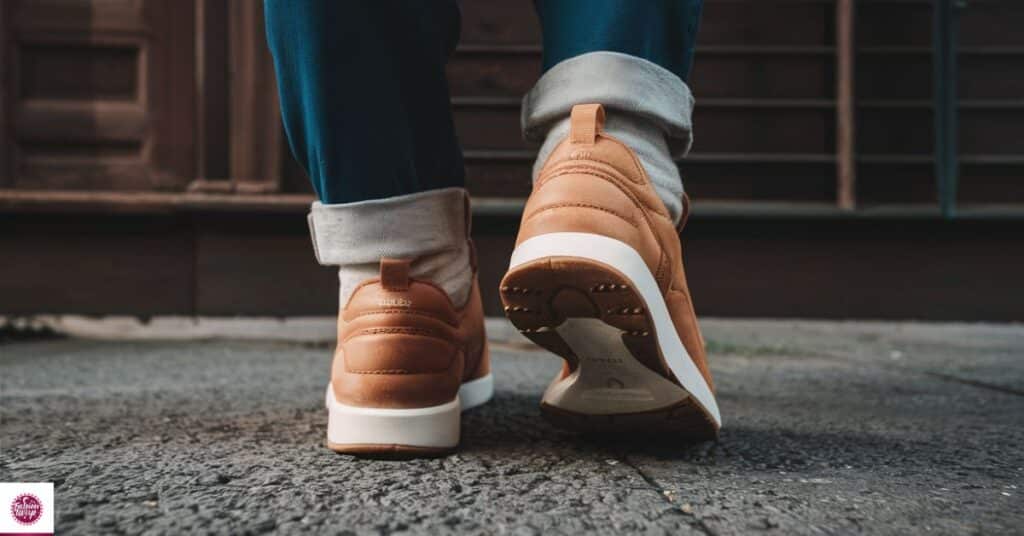
Apart from the sole, several other components contribute to the bottom of a shoe. One such component is the outsole, which is the outermost layer of the sole that directly contacts the ground. It is usually made of durable rubber or synthetic materials to provide traction and protect the shoe from wear and tear.
Another crucial element is the tread pattern, which is the design on the outsole that determines the shoe’s grip and stability on various surfaces.
The depth and pattern of the treads vary depending on the shoe’s intended use, with deeper treads for outdoor activities like hiking and shallower ones for casual wear. Additionally, the stitching and bonding techniques used to attach the outsole to the rest of the shoe play a role in its overall durability and structural integrity.
Beyond the Sole: Additional Components Enhancing Shoe Bottoms
Beyond the sole, other components contribute to enhancing shoe bottoms. Tread patterns on the outsole provide traction. Stitching and bonding techniques ensure durability. Together, these elements create a sturdy foundation for footwear.
Enhancing Traction and Durability: Other Elements Beneath Your Feet
Other elements beneath your feet enhance both traction and durability. Tread patterns on the outsole increase grip. Additionally, sturdy stitching and bonding techniques ensure longevity. These features collectively create a reliable foundation for footwear.
Caring Tips for The Bottom of Your Shoes
Proper care of the bottom of your shoes is essential for longevity. Regularly clean them with a soft brush or cloth to remove dirt and debris. Avoid exposing them to harsh chemicals or extreme temperatures. Store them in a cool, dry place away from direct sunlight when not in use.
Why is it important to know the parts of a shoe?
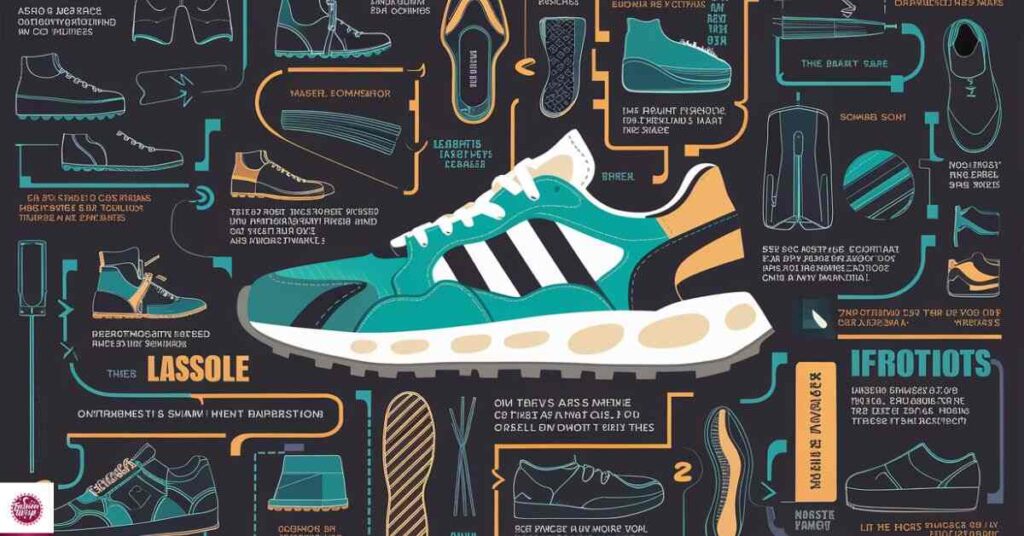
Knowing the parts of a shoe is crucial for several reasons. Firstly, it helps in understanding the shoe’s construction and functionality. Secondly, it enables better communication when discussing footwear preferences or issues with professionals.
Thirdly, understanding the parts can aid in proper shoe care and maintenance. Lastly, it allows for informed decisions when purchasing shoes, ensuring the right fit and comfort.
Understanding Footwear Functionality: Importance of Knowing Shoe Components
Knowing shoe components is crucial for understanding how footwear functions. It helps in selecting the right shoes for different activities. Understanding each part’s role enhances overall comfort and support. Familiarity with shoe components ensures informed purchasing decisions.
Informed Footwear Decisions: Significance of Familiarity with Shoe Parts
Familiarity with shoe parts enables making informed footwear decisions. Understanding components aids in selecting shoes suited to individual preferences and needs. It ensures proper fit comfort and support. Additionally, knowing shoe parts enhances communication with professionals for customization or repairs.
Frequently Asked Question
What are the parts of your shoes?
The main parts of a shoe include the sole midsole upper heel and insole.
Is the bottom of shoes rubber?
Yes, the bottom of shoes is often made of rubber for durability and traction.
Why is it called the sole of a shoe?
It is called the sole because it is the bottom part that provides support and protection.
What are shoes with thick soles called?
Shoes with thick soles are commonly referred to as platform shoes or chunky sneakers.
What is the bottom of a boot called?
The bottom of a boot is called the outsole, providing grip and protection from the ground.
Which part is sole?
The sole refers to the bottom part of the shoe that makes direct contact with the ground.
Final Thoughts
The bottom of shoes known as the sole serves as the foundation of footwear. Providing essential support protection and traction. Understanding the significance of the sole is pivotal for appreciating the intricate design and functionality of shoes.
From the toe cap to the heel tab, each component of the sole contributes to the overall comfort and performance of the shoe. Moreover being aware of the sole’s composition aids in selecting the appropriate footwear for various activities and environments, ensuring optimal comfort and safety for the wearer.
Whether it is navigating city streets or trekking through rugged terrain, the sole plays a crucial role in facilitating smooth and secure movement. Therefore, acknowledging and appreciating the importance of the sole enhances our understanding of footwear and underscores its indispensable role in our daily lives.

